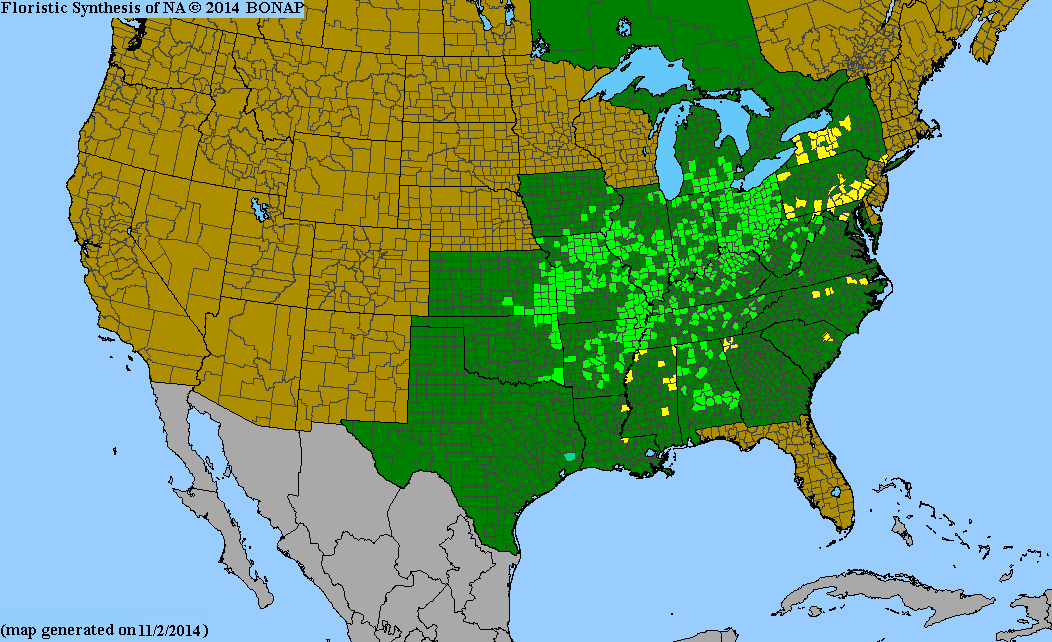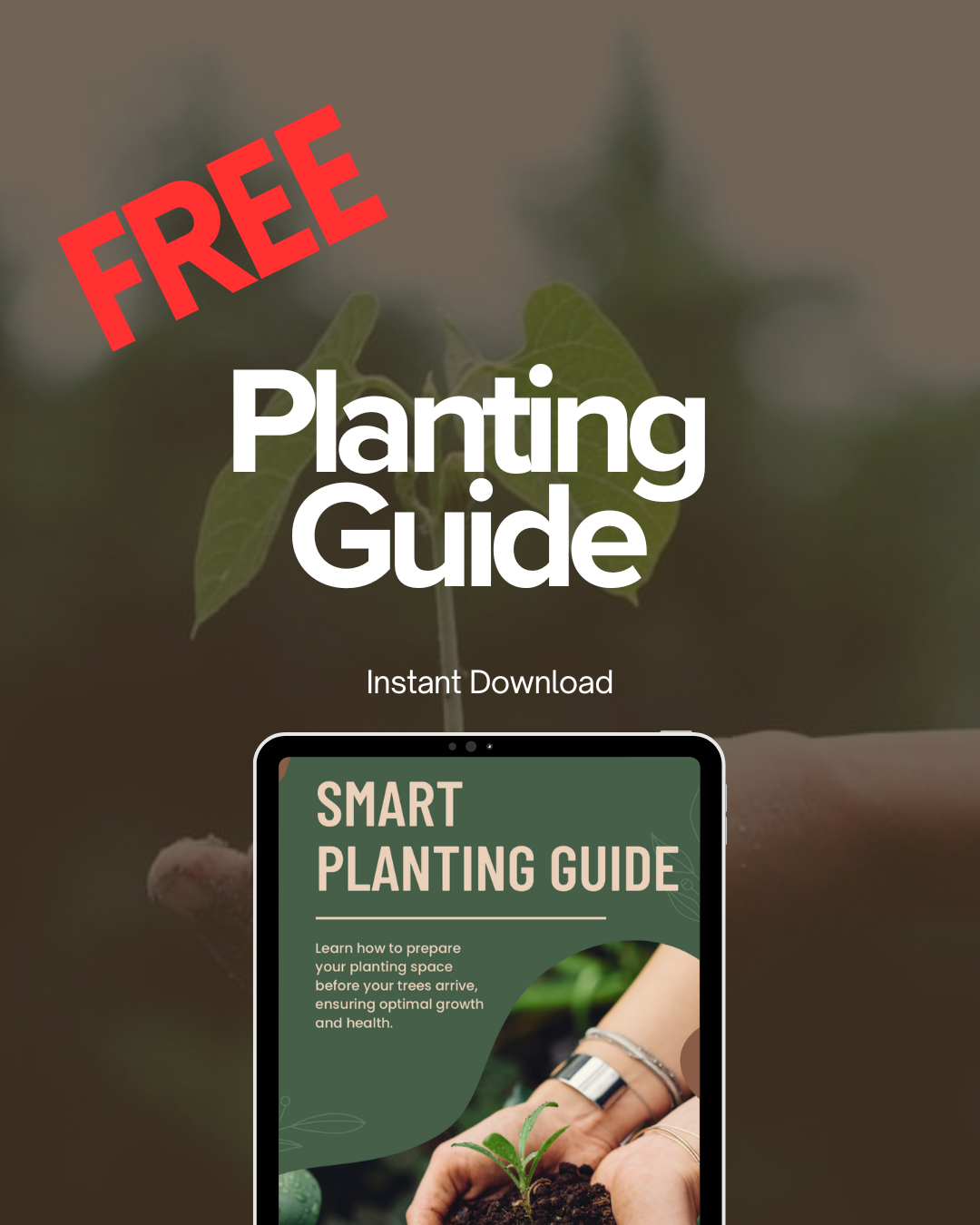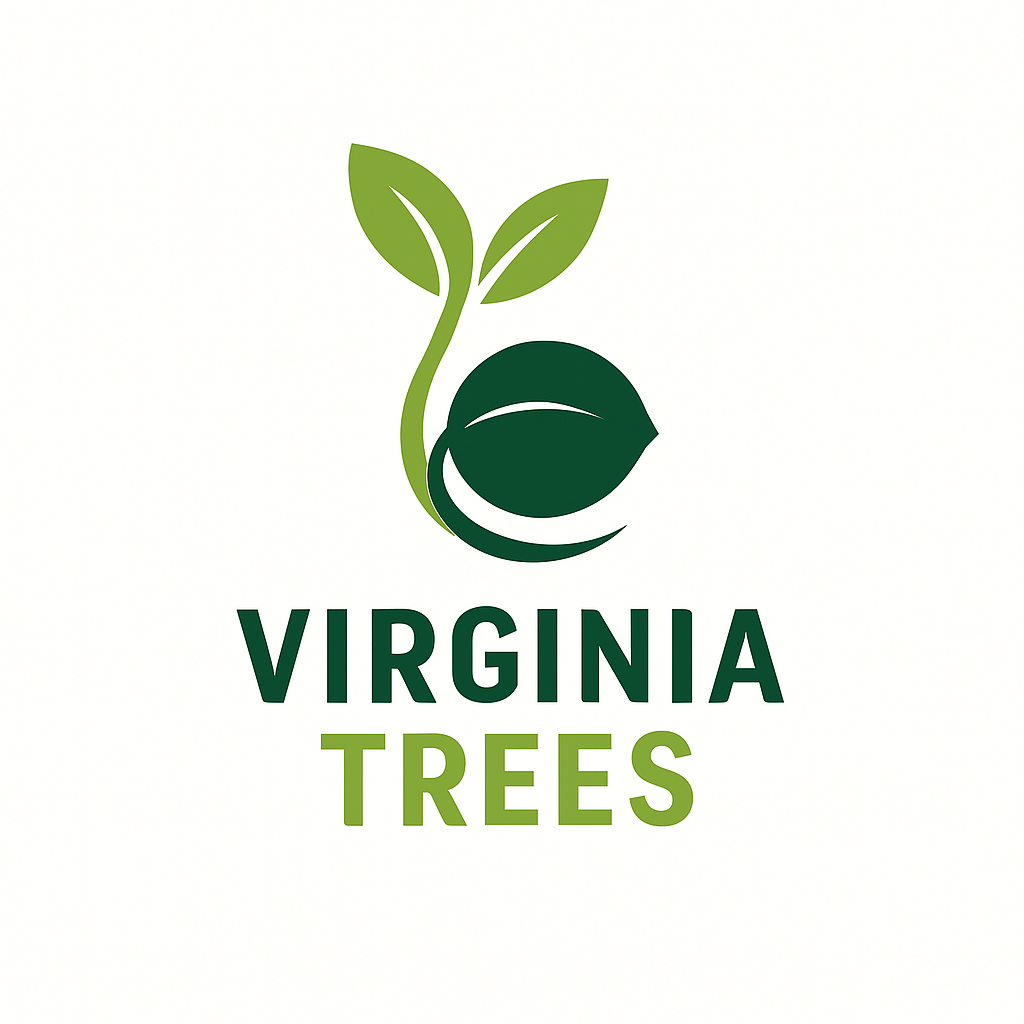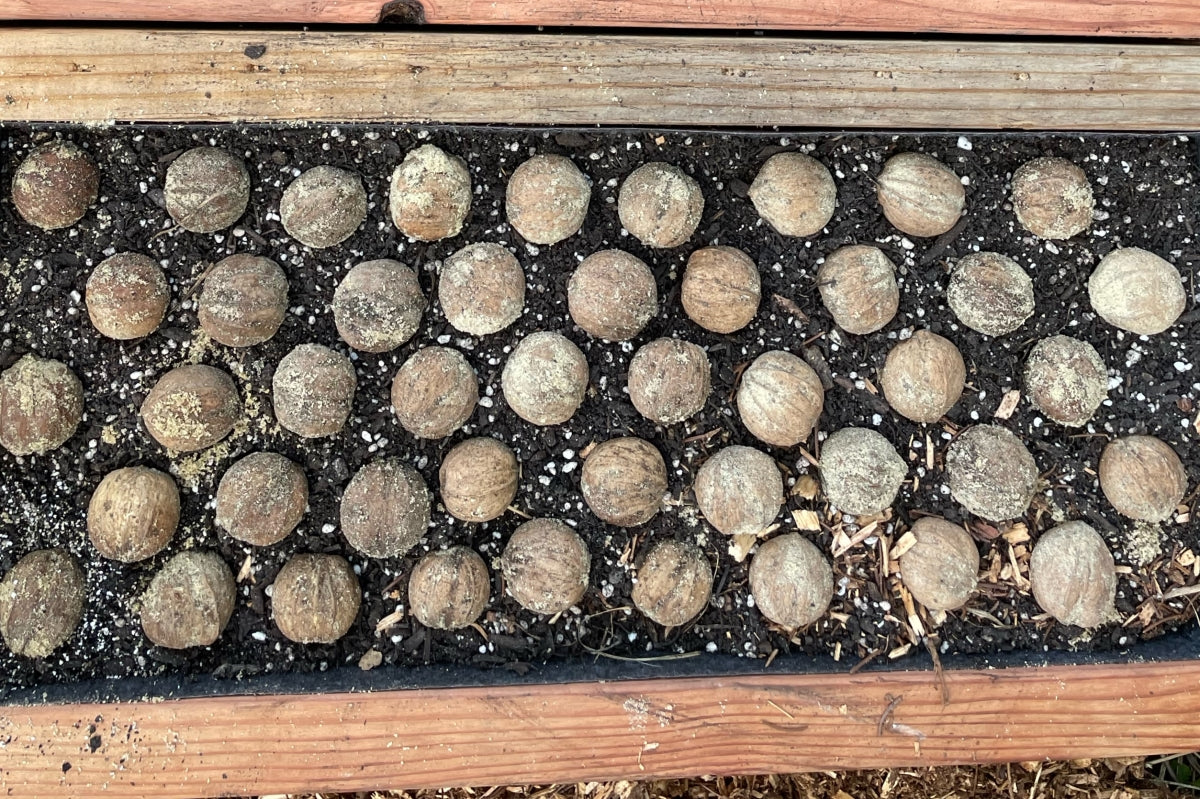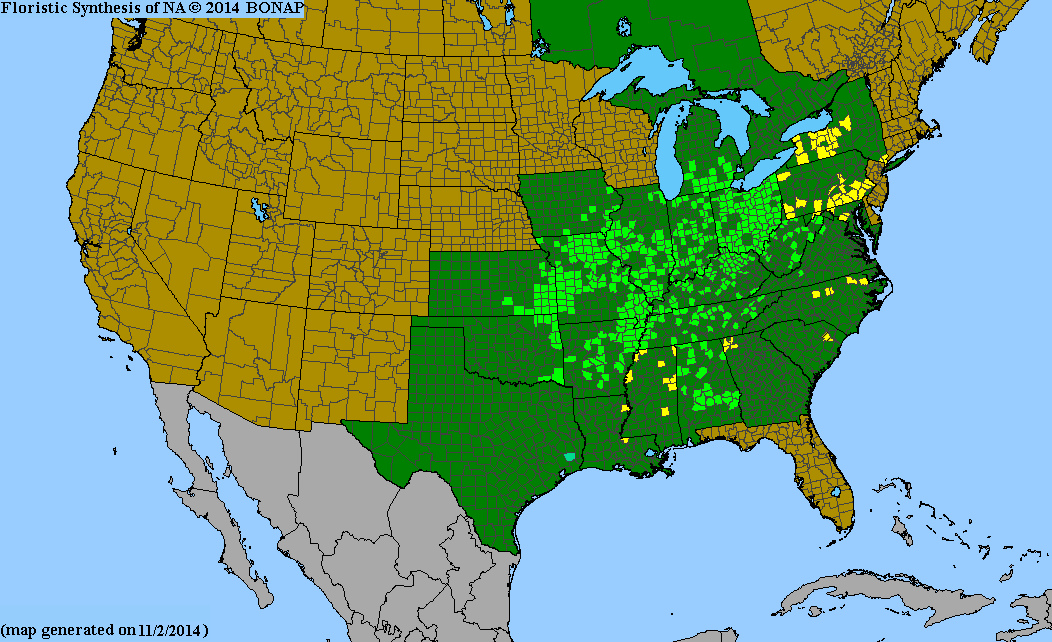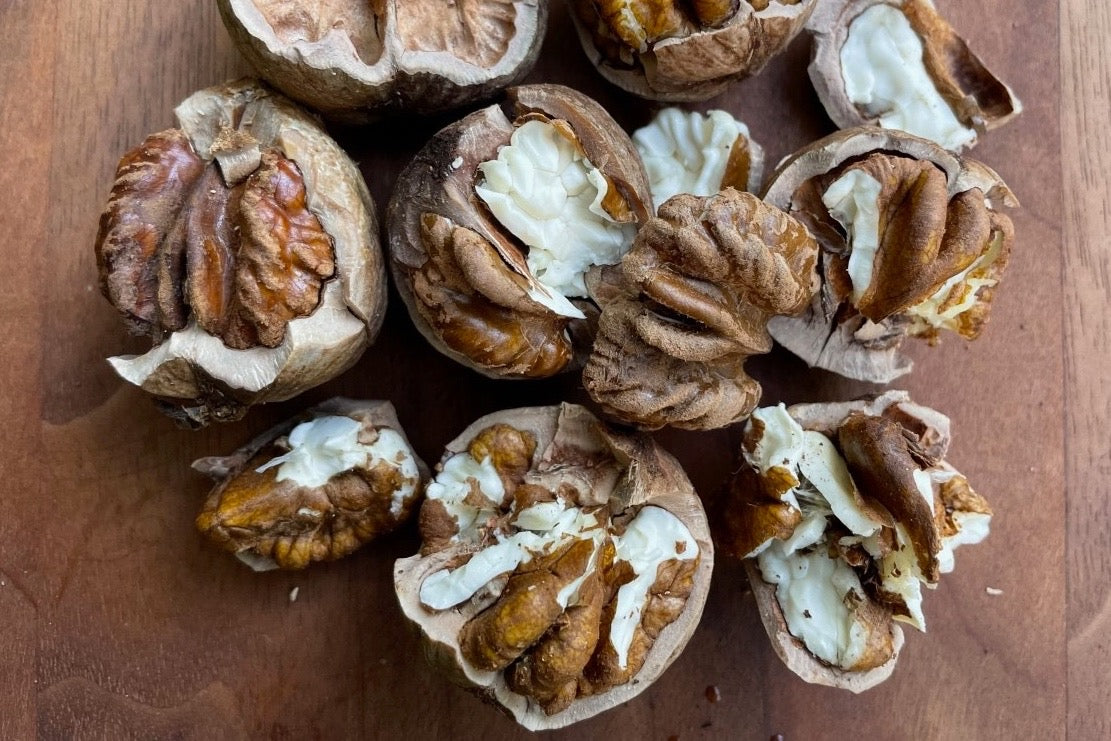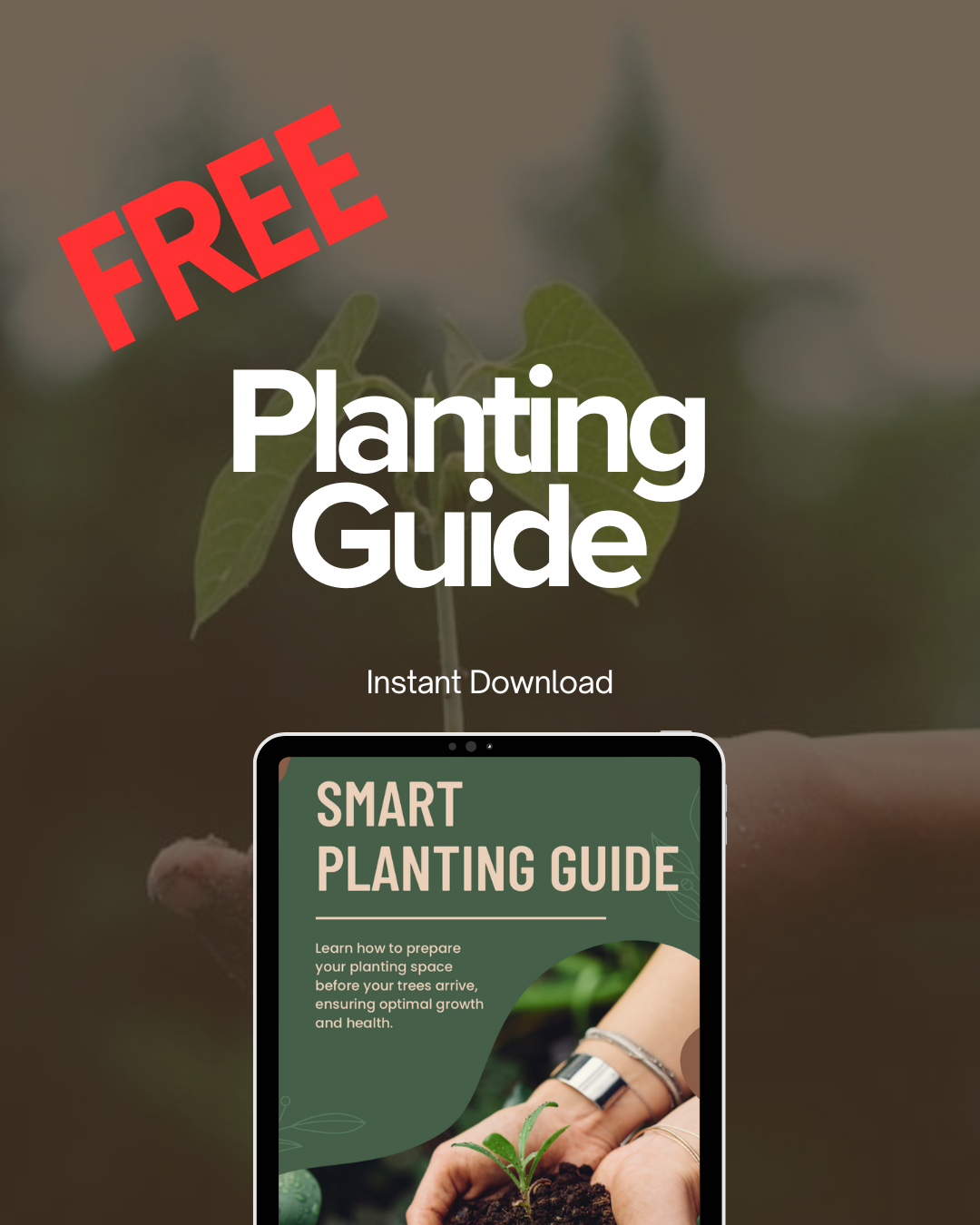Virginia Trees
Shellbark Hickory
Shellbark Hickory
Couldn't load pickup availability
Shellbark produces the largest nut of any hickory. It was once abundant in American bottom lands but is now nearly gone from its native habitat (see images for map of range).
These are first year seedlings in the range of 1' tall.
Since these are tap rooting trees, it is preferable for the tree to be transplanted very small to promote root health.
All seedlings are shipped dormant as bare roots.
Types of Seedlings
Seedling Shellbark Hickory: Burnt Ridge
Carya laciniosa
Seed source: Burnt Ridge Nursery
Description:
Large, slow-growing shellbark hickory thrives in full sun or partial shade in deep, fertile, moist soils. It grows well in wet bottom lands and may withstand its roots being periodically submerged. Its striking bark and large winter buds add to the ornamental value of the tall, slender tree. The bud scales fold back, petal-like, as new foliage emerges. Characteristic bright orange twigs, its open habit and its bark give it winter interest. It reaches a height of 60-80 feet. Winter hardy to zone 5.
_________________________
SOLD OUT
2022 offering archive
Seedling Shellbark Hickory: Illinois Gigant
Carya laciniosa
Seed source: Ken Asmus, Oikos Tree Crops
Ken's description:
The large nut size is off the charts compared to all other hickories. This was one of the best strains of shellbark I have found. Many of the trees show incredible vigor for a hickory tree as well. The nuts have a thick shell but with a vice type cracker, it is easy to retrieve halves and quarters with most of them. Some have a more convoluted shell and others not so much. Easy to collect and easy to store, it is practical to harvest. Tolerant of flooding and heavy wet soils. Able to grow near wetlands but can easily grow in upland soils too were it is more of a sandy loam. Alkalinity not an issue with this species as well. Single trees are often self fertile. But two is better to ensure overlap in pollination. Trees can withstand large amounts of competition from other plants and work their way upward. Trees will produce at a 'young' age from seed around 15 years when the trees have a 2-4 inch caliper. Some trees may take upwards to 25 years to produce. The nut crop is super reliable with this hickory and is practical to grow and harvest.
Seedling Shellbark Hickory: Abundant
Carya laciniosa x ovata
Seed source: Ken Asmus, Oikos Tree Crops
Ken's description:
I received this seed in the mid 1980's from an orchard in Iowa where the grafted variety called 'Abundance' was in full display. It is thought this selection might be a hybrid with shagbark hickory. Nuts began being produced at about 15 years of age. The trees also produced nuts like a spur apple in some ways as the nuts were clustered along the inside of the tree as well not just on the tip of the branches. The term abundance was an understatement and this one hickory out yields all others at our farm. The trees are fruitful almost every year and the nuts rarely have weevils. The trees escape most frosts. The cracking of the nuts works well once the nuts are air dried over a month or so at room temperature after which they crack out in halves and quarters. Each tree is different in this characteristic however if dried down fully, the nuts will come out fairly easily. Self fertile for the most part. Trees may benefit from pollen from each other or other shellbark hickories. Found growing in heavy loam soils but does equally as well in sandy soils with limited organic matter. Very adaptable and can grow in moist soils too. One of the easiest of the hickories to establish. Fast growing and produces at a younger age than other species. Not grown much in the nursery trade due to tap root issues however now that be overcome now with the right pot and soil media.
Shipping or Pickup Info
Shipping or Pickup Info
FREE SHIPPING ON ANY ORDER OVER $59!
You will receive an email when plants begin shipping. This will be once they go dormant for the winter.
Local pickup orders will also receive an email with the potential pickup dates when we get closer as this depends on the weather.

